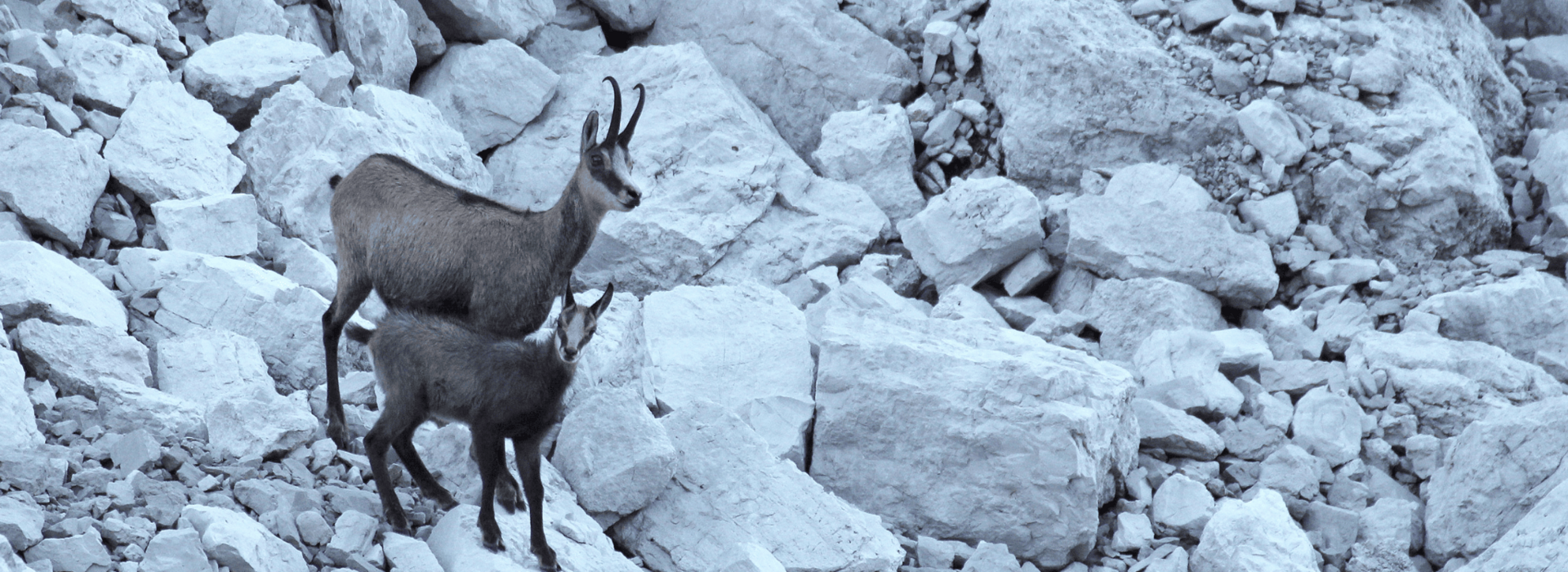
Gruppo di lavoro Grandi predatori, ungulati selvatici e società - WISO
I grandi carnivori come il lupo, l'orso e la lince, e gli ungulati selvatici come lo stambecco, il camoscio o il cervo, sono attori importanti degli ecosistemi alpini. Inoltre, queste specie sono comunemente associate agli ambienti alpini nelle rappresentazioni artistiche e culturali.
Negli ultimi cinque decenni, i grandi carnivori hanno registrato una sostanziale ripresa delle popolazioni nelle Alpi, evento che è ampiamente considerato una storia di successo per la conservazione. Un approccio concertato a livello alpino è fondamentale per avere una comprensione comune della distribuzione e delle dimensioni delle popolazioni di tali specie e per gestire meglio i conflitti con le attività umane come la pastorizia, la silvicoltura e la caccia.
L'obiettivo principale del Gruppo di lavoro Grandi predatori, ungulati selvatici e società (WISO), istituito dalla X Conferenza delle Alpi nel 2009, è quello di trovare e condividere soluzioni congiunte per gestire i grandi carnivori e gli ungulati selvatici in modo armonioso con la società e sulla base di un approccio integrato. Il Gruppo di lavoro va oltre un approccio strettamente ecologico, cercando di considerare anche gli aspetti economici e sociali in modo equilibrato.
Nel corso dell'attuale mandato, e in continuità con i precedenti, il Gruppo di lavoro WISO promuove la condivisione di esperienze tra i Paesi alpini per valutare la gestione dei grandi predatori e degli ungulati selvatici e il loro impatto sociale ed economico. Vengono inoltre considerati i contesti europei e internazionali su cui si basano le attuali legislazioni nazionali sulla gestione dei grandi predatori e degli ungulati selvatici (Convenzione di Berna e Direttiva Habitat).
Attività, documenti e risultati
- Mandate until the XIX Alpine Conference
- Common Agricultural Policy (CAP) and prevention of damages caused by large carnivores (2024)
- Joint Conference of the Alpine and Carpathian Conventions for the exchange of practices on management of large carnivores (2024)
- Report on the Monitoring, Status and Management of the Brown bear in the Alps (2024)
- Activity Report 2023-2024
- Implementation of the management options for the conservation of the Brown bear in the Alps (2022)
- Summary on the wild ungulate management discussion (2022)
- Landscape connectivity for large carnivores and wild ungulates in the Alps (2022)
- Implementation of the management options for the conservation of the wolf in the Alps (2022)
- Activity Report 2021-2022
- Prevention of damages caused by large carnivores in the Alps (2020)
- Summary of the exchange on ungulate monitoring (2020)
- Activity Report 2019-2020
- Activity Report 2016-2019
- Preventing damage by large carnivores: A comparison of use of the European Agricultural Fund for Rural Development to protect livestock in the Alpine countries (2018)
- Guidelines for Common Management of Brown Bear in the Alpine and Northern Dinaric Region (2017)
- Statement on the DINALPBEAR report “Guidelines for Common Management of Brown Bear in the Alpine and Northern Dinaric Region”
- Wolf in the Alps: Recommendations for an internationally coordinated management (2016)
- Lynx in the Alps: Recommendations for an internationally coordinated management (2016)
- Defining, preventing and reacting to problem bear behaviour in Europe (2015)
- Report on the implementation of the RowAlps project (2014)
- Preliminary results of the EU pilot action on problem bear management in the Alpine bear population (2014)
- Preliminary version of the IBEX map in the Alps
- Quadro di riferimento della Piattaforma “Grandi predatori, ungulati selvatici e società” (adottato dalla XI Conferenza della Alpi, Brdo 2011)
- Documento di background della piattaforma
- Prima Conferenza "Grandi Predatori",26-28 Aprile 2012, Innsbruck
- Programme WISO Conference April 2012, Innsbruck
- WISO Platform Activities, Caroline Nienhuis
- Guidelines for Population Level Management, Urs Breitenmoser
- Brown bear management in Slovenia, Marko Jonozovic
- The genetic footprint of Alpine ibex reintroductions & implications for population management, Christine Grossen
- Results from the ECONNECT project, Ruedi Haller
- Monitoring standards for large carnivores in Germany, Felix Knauer
- Lynx Project Bayern, Sybille Wölfl
- Monitoring of wolves in the Alps, Francesca Marucco
- Working group Modeling
- Working group Monitoring
- Working group Human Dimensions
- Secondo Workshop della Piattaforma "Grandi predatori"1-3. Febbraio10, Innsbruck
- Programme
- Information on the first meeting of the platform
- Situation of large carnivores in the Alps, Urs Breitenmoser
- Carnivores and Ungulates in the Alps, Ulrich Wotschikovsky
- Expectations of Alpine hunters towards governments concerning large carnivores and wild preys, Marco Giacometti
- Multifunctional close-to-nature forest management and wildlife management, Philippe Schütz
- Multifunctional Mountain Forestry, Kurt Ziegner
- Alpine outdoor sports–recent developments, nature compatibility & good practices for visitors guidance, Willi Seifert
- Viewpoints of the Alpenpark Karwendel, Tourism, Anton Heufelder
- Small Ruminants versus Large Carnivores in the Alps, Georg Höllbacher in Veronika Nowak
- Nature protection, Joanna Schoenenberger
- Platform "Ecological Network" of the Alpine Convention, Yann Kohler
- Alpine Space Project Econnect, Aurelia Ullrich
- Primo Workshop della Piattaforma "Grandi predatori"22-23.Ottobre 09, Vaduz
- Information on the first meeting of the platform
- “Large carnivores and wild ungulates”,mandate, reasoning behind and working methods, Felix Näscher
- Platform “Large Carnivores and wild ungulates” and the Alpine Convention, Regula Imhof
- Living with large carnivores and wild ungulates in a changing ecological, economical and socio-cultural environment, Mario F. Broggi
